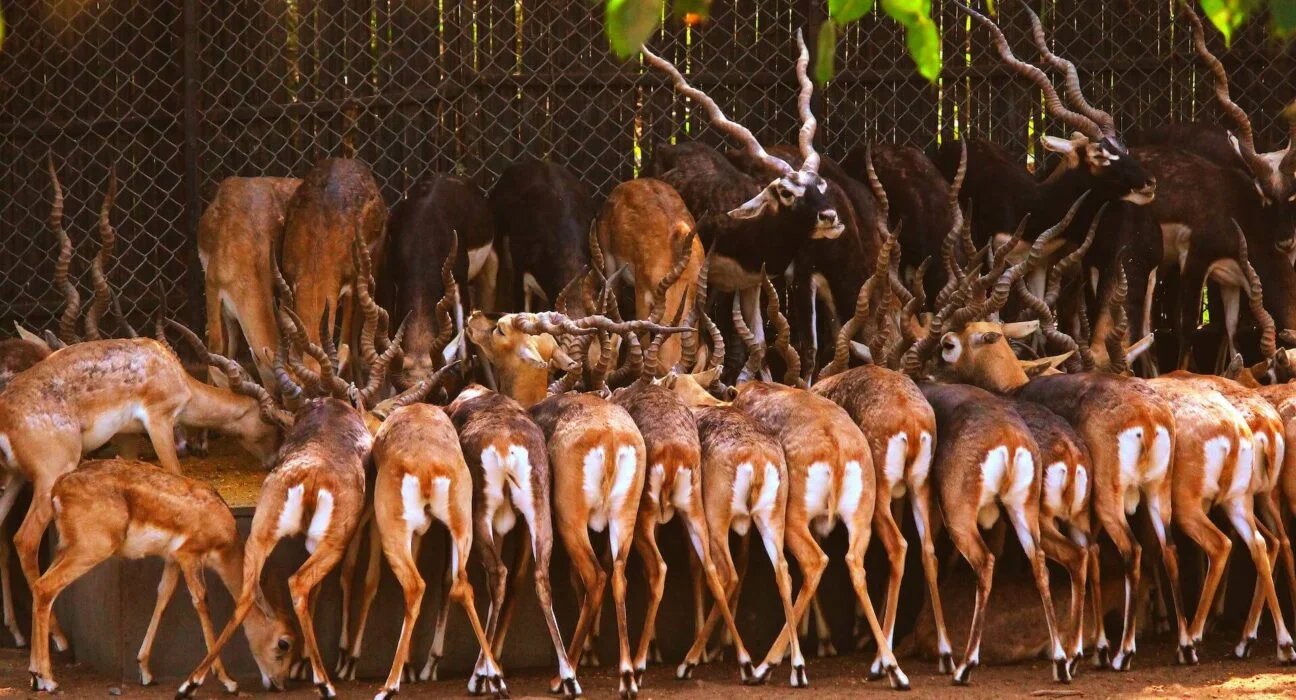Winter poses a formidable challenge for wildlife, particularly for deer struggling to find sustenance amidst harsh conditions. It becomes increasingly important to support deer during these months when the temperature drops and the terrain is covered in snow. This article delves into the advantages of aiding deer in winter, emphasizing a natural and accessible approach to ensure their well-being.
Table of Contents
Wintertime Challenges for Deer:
Deer encounter a variety of obstacles that could endanger their lives throughout the winter months. The scarcity of natural food sources, combined with the increased energy demands for staying warm, puts a strain on their health. In their quest for sustenance, deer may roam into urban areas, exposing themselves to various risks. The use of a deer feeder can address these challenges by ensuring a reliable and easily accessible food source. This not only aids in maintaining their physical health but also reduces the likelihood of human-wildlife conflicts. Additionally, it promotes a more balanced distribution of deer populations, minimizing the impact on both wildlife and human communities.
Nutritional Benefits of Winter Feeding:
During winter, deer require a well-balanced diet to endure the harsh conditions. Natural forage becomes limited, impacting their nutrition intake. A strategically placed feeding station filled with appropriate feed provides essential nutrients that might be lacking in their winter diet. This supplementary feeding can contribute to the overall health of the deer population, promoting stronger immune systems and aiding in the survival of fawns born during this challenging season. Additionally, it plays a vital role in fostering a resilient and adaptable deer community in the face of environmental fluctuations.
Wildlife Conservation Efforts:
Feeding deer in winter is not just an act of compassion but also contributes to broader wildlife conservation efforts. As human developments encroach upon natural habitats, deer populations face habitat loss and fragmentation. This disruption not only impacts deer but also affects the delicate web of biodiversity, potentially leading to cascading effects on other wildlife species and their habitats. Providing supplementary food individually or as a community plays a vital role in maintaining a balanced ecosystem, ensuring the continued presence of deer in diverse natural landscapes.
Educational Opportunities:
Feeding deer in winter provides a unique opportunity for wildlife observation and education. Setting up feeding stations near your home allows you to witness these majestic creatures up close, providing valuable insights into their behavior and social dynamics. Observing deer in a non-intrusive manner fosters a deeper appreciation for wildlife and promotes a sense of responsibility toward their well-being. Additionally, it offers a firsthand connection with nature, creating moments of serenity and understanding in the midst of fast-paced lives.
Community Involvement and Enjoyment:
The act of supporting deer in winter can extend beyond individual efforts, becoming a communal activity that brings neighbors together. Collaborative initiatives to aid wildlife in winter not only strengthen community bonds but also create shared spaces for enjoying nature. In urban and suburban settings, where wildlife encounters may be limited, the presence of feeding stations becomes a focal point for shared enjoyment and appreciation of the natural world. The shared enjoyment and appreciation of the natural world fostered by feeding stations can catalyze community-driven environmental initiatives, inspiring residents to collectively contribute to the well-being of local wildlife and their habitats.
Ethical Considerations in Winter Wildlife Support:
While the act of providing aid to deer in winter is undoubtedly well-intentioned, it’s essential to consider the ethical dimensions of such interventions. Engage in wildlife support initiatives, questions arise about the potential consequences of human interference in natural processes. Ethical considerations encompass concerns about dependency, altered migration patterns, and the unintended impact on other species sharing the same ecosystem. Striking a balance between the desire to assist wildlife and the ethical responsibilities tied to interventions is crucial for ensuring the long-term well-being of both deer populations and the broader ecological landscape.
Conclusion:
The advantages of aiding deer in winter reach beyond the immediate provision of sustenance. Strategies to support deer populations contribute to their well-being, aid in wildlife conservation, offer educational opportunities, and foster a sense of community involvement. As you navigate the challenges of coexistence with wildlife, small acts like providing supplemental food can have a positive ripple effect, creating a harmonious balance between humans and the natural world.






